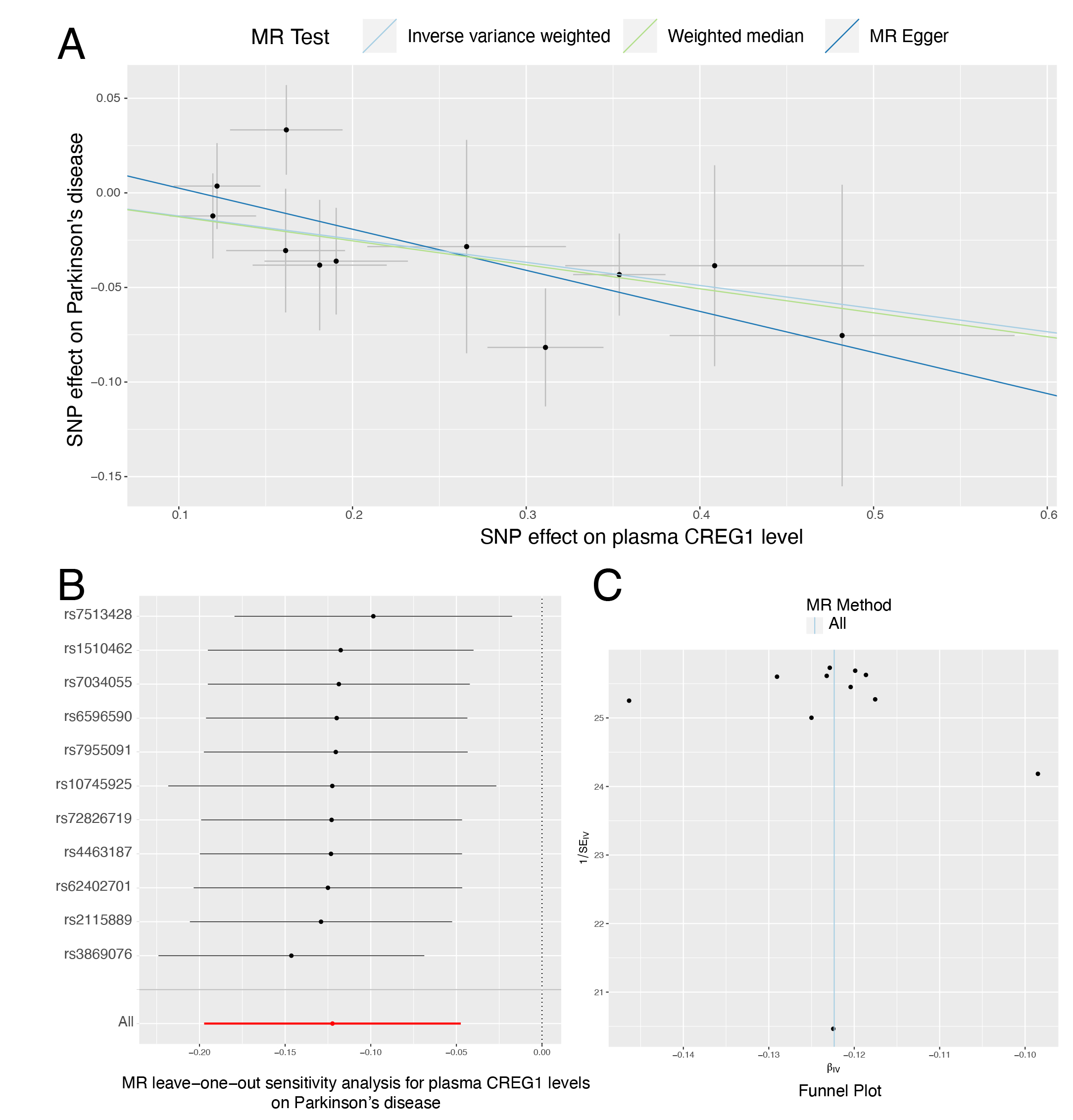Category: Parkinson's Disease: Pathophysiology
Objective: The purpose of this study is to assess the causal associations between plasma cellular repressor of E1A-stimulated genes 1 (CREG1) levels and the risk of Parkinson’s disease (PD).
Background: Lysosomal dysfunction plays a crucial role in the pathogenesis of PD, leading to the accumulation of α-synuclein and progressive loss of dopaminergic neurons in the brain. Recent studies suggested that the expression of CREG1, which could promote lysosomal biogenesis and function, was decreased in PD patients [1, 2]. However, it remains unknown whether the relationship between CREG1 and PD is causal.
Method: A two-sample Mendelian randomization (MR) approach was employed to estimate the causal effect of plasma CREG1 levels on PD risk. We utilized large-scale genome-wide association studies to identify genetic variants associated with plasma CREG1 levels (N=3,301) [3] and PD (N=482,730) [4]. Finally, eleven instrumental variables were identified at a threshold of P-value less than 5E-06. The inverse variance weighted (IVW), MR-Egger, and weighted median methods were applied to calculate the estimates. We also performed the pleiotropic test, heterogeneity analysis, and leave-one-out analysis to validate the stability of the estimates.
Results: Using the IVW approach, our data showed that one standard deviation increase in plasma CREG1 levels was associated with a 12% decreased risk of PD (odds ratio [OR]=0.88, 95% confidence interval [CI]=0.82-0.95, P= 0.001), which was further validated using MR-Egger (OR=0.80, 95% CI=0.67-0.96, P= 0.041) and weighted median (OR=0.88, 95% CI=0.79-0.97, P= 0.014) (Figure 1A). No obvious outlier bias and study bias were found in the leave-one-out plot and funnel plot (Figure 1B, C). There was no significant horizontal pleiotropy and heterogeneity observed in the present MR study, suggesting good reliability.
Conclusion: Our findings provide evidence for the potential involvement of CREG1 in preventing the development and progression of PD. Future basic and clinical studies are needed to further elucidate their relationship.
References: 1. Liu, J., et al., CREG1 promotes lysosomal biogenesis and function. Autophagy, 2021. 17(12): p. 4249-4265.
2. Pantaleo, E., et al., A Machine Learning Approach to Parkinson’s Disease Blood Transcriptomics. Genes (Basel), 2022. 13(5).
3. Sun, B.B., et al., Genomic atlas of the human plasma proteome. Nature, 2018. 558(7708): p. 73-79.
4. Nalls, M.A., et al., Identification of novel risk loci, causal insights, and heritable risk for Parkinson’s disease: a meta-analysis of genome-wide association studies. Lancet Neurol, 2019. 18(12): p. 1091-1102.
To cite this abstract in AMA style:
X. Guo, R. Zhou, G. Tian, R. Li. Elevated plasma CREG1 levels are linked to a lower risk of Parkinson’s disease [abstract]. Mov Disord. 2023; 38 (suppl 1). https://www.mdsabstracts.org/abstract/elevated-plasma-creg1-levels-are-linked-to-a-lower-risk-of-parkinsons-disease/. Accessed April 1, 2025.« Back to 2023 International Congress
MDS Abstracts - https://www.mdsabstracts.org/abstract/elevated-plasma-creg1-levels-are-linked-to-a-lower-risk-of-parkinsons-disease/

